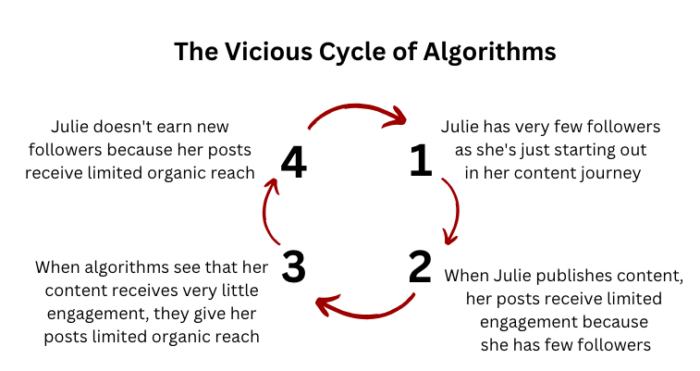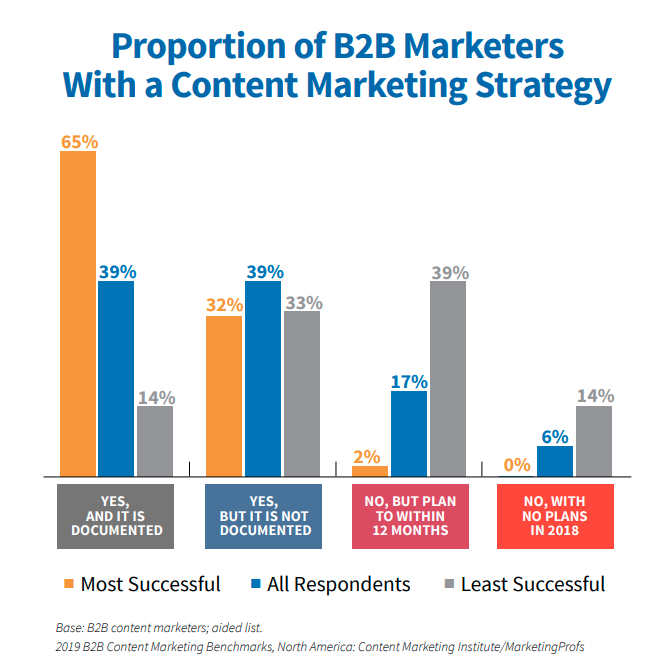By Tim Stoddart
There were a lot of changes in content marketing over the past year, and the companies winning the content game aren’t just using the basic best practices that were commonplace a few years ago.
Today, the best content marketing strategy leverages a combination of multiple marketing channels and produces a high volume of quality content.
Many of the best content marketers now leverage AI to scale their content while making it more personal than ever before by incorporating elements of personal branding and user generated content into their content strategy.
It’s also important to remember that you can’t build a brand around a single content marketing campaign or viral video. So below, we’ll show you not only some of the best content marketing examples from the past year, but also break down the content strategy behind each of these highly successful brands.
Let’s jump into it.
Ocho Wealth
Ocho Wealth is a platform that allows business owners, creators, and people with side hustles to manage their finances.
They launched in 2022 and grew to over $200,000 in ARR in the first year with just 10 team members.
However, what’s most interesting is that their founder refuses to invest anything into paid ads. Instead, they’re relying entirely on organic marketing efforts (largely content marketing).
You can read his full content marketing playbook here, though here’s a brief summary of how they’re investing in content marketing:
- SEO: They’ve already published hundreds of blog posts related to finances for business owners and have scaled traffic to nearly 20,000 monthly searches:
- Creator Collaborations: They’re building multiple courses on financial education, like angel investing, setting up retirement accounts, and more. These collaborations also allow them to tap into the creators’ audience.
- Personal Branding: The founder, Ankur, has built a significant Twitter audience (currently over 60k followers) and stated that most of his initial customers come from Twitter followers.
- Newsletter: They recently launched a newsletter that provides various tips on personal finances for business owners and regularly features creators in the personal finance space.
This strategy has helped the company achieve impressive growth with a very lean team of just ten people and zero dollars on paid ads.
Exploding Topics
Exploding Topics is an excellent example of a B2B SaaS company that has scaled to millions of dollars in ARR through organic content marketing.
Founded by SEO expert Brian Dean, it’s no surprise that they invest heavily in blog content.
However, rather than just writing generic content targeting high volume and low difficulty keywords, they create content that showcases the product’s capabilities.
Exploding Topics is a trend discovery tool, so they create hundreds of list posts for various industry trends, and each blog post features trends discovered by Exploding Topics.
When readers see that the trends recommended in these blog posts are unique, under-the-radar trends, they immediately understand the product’s value, and if they want more similar trends, it’s a no-brainer to sign up for the product.
As a result most of their current users came from SEO traffic.
As an added benefit, these blog posts generate a lot of traffic (they currently drive over 200,000 monthly visits), which has helped the website gain authority and helped Exploding Topics earn a lot of brand awareness.
To earn backlinks, he created blog posts to answer individual statistic-based questions. For example, some of the top linked-to pages on Exploding Topics are blog posts targeting terms like:
- How many people own Bitcoin?
- How many cryptocurrencies are there?
- How many gamers are there?
However, he also invests heavily in email marketing. In fact, he stated in a recent video that this is the single most valuable marketing channel for his business.
The Exploding Topics newsletter sends subscribers a list of five trending products and five trending companies so that users receive regular helpful trend recommendations and are reminded of the product’s value.
Finally, the team also publishes content very consistently. So create a content calendar and then be sure to stick to it. While it may seem obvious, the key difference that sets the most successful marketing strategies apart from the rest is usually just a matter of consistent execution.
SEMrush
SEMrush has a highly successful content marketing strategy that leverages various marketing channels.
In addition to their blog content, they also have a thriving social media content strategy and regularly post memes, templates, and snippets of content repurposed from their blog and YouTube channel. A quick glance at their LinkedIn account should give you some inspiration for your social content strategy.
Speaking of their YouTube channel, SEMrush regularly collaborates with SEO and general marketing thought leaders to host webinars and then the team repurposes the recording as video content. These collaborations help SEMrush tap into the influencers’ audience and allows the brand to create more high-quality content at scale.
Similar to Ocho, they also take video content to the next level by collaborating with a handful of select influencers to create free courses for their audience.
SEMrush is also a large company with a substantial content marketing budget, so they often deploy that capital to simply acquire existing blogs that their target audience already reads and loves. In fact, they recently acquired the Backlinko blog for an estimated $15 million.
AIOSEO
AIOSEO is an SEO plugin for WordPress that makes optimizing your website for search engines easy.
This company is also operated by a relatively small team, and therefore has a lean, yet highly effective, content strategy.
Instead of trying to dominate every marketing channel, they doubled down on SEO content. Like
Exploding Topics, most of their blog content targets keywords that their product solves, and they showcase how the product solves it inside the blog post. For example, this blog post targets the pain point “How to Generate A Robots.txt File In WordPress.”
Then, they walk the user through how to do so with their tool:
This blog post answers the reader’s question and effectively demonstrates the product’s value, making it an outstanding content marketing example.
It’s also worth noting that AIOSEO is part of the Awesome Motive portfolio, a group of various WordPress plugins.
Therefore, other brands within the portfolio also create content about AIOSEO on other blogs.
For example, here’s a blog post on “Best WordPress SEO Plugins” on the WPBeginner blog (another member of the Awesome Motive portfolio), and you can see that AIOSEO is first on the list:
Finally, they also have a thriving affiliate program, which helps them further scale their content marketing strategy at minimal additional cost as their affiliates create content for them. The affiliate content also helps increase the brand’s general credibility.
These combined content marketing efforts have been incredibly effective as they have scaled traffic from 20,000 to nearly 60,000 monthly visitors in just a year.
Hampton
Hampton is a newer company founded by Sam Parr, and its success is mostly thanks to Sam Parr’s personal brand.
Sam built his personal brand on Twitter and through the popular business podcast he co-hosts, My First Million.
So, when he launched the company, it’s no surprise that he had an overwhelming response. It’s already doing over eight figures and the team is still relatively small.
Therefore, personal branding is proving to be a highly effective content marketing strategy – even for B2B brands.
However, Hampton also has an interesting strategy for their blog content. Rather than targeting SEO keywords, they write stories about the members of their community.
As the product the business is selling is essentially access to high-level entrepreneurs, these stories are actually very effective at selling the value of the business.
Finally, they also leverage email marketing to capture and retarget interested top of funnel audiences.
AppSumo
AppSumo is an affiliate brand that partners with software companies offering tools to small business owners and freelancers.
The company generates over $85 million in revenue annually, and it relies heavily on content marketing.
First, AppSumo has a thriving SEO strategy that consists largely of listicle posts and guides targeting pain points solopreneurs and small business owners experience.
They’ve also stated that their email marketing strategy is arguably their most effective marketing strategy. Since their business model is selling limited-time deals, email marketing makes sense as customers will want to stay up-to-date with the latest offers.
In addition to traditional marketing strategies, they rely heavily on the founder, Noah Kagan’s, personal brand to attract customers. Noah has a podcast and a YouTube channel that covers topics relevant to solopreneurs, creators, and freelancers.
His YouTube channel tends to focus on topics that could potentially go viral. For example, he has plenty of videos of himself asking owners of fancy cars, homes, yachts, and even private jets how to make money:
While these videos are primarily designed to generate brand awareness, they still attract his ideal audience (people who have small businesses or want to start a business) and therefore contribute to AppSumo’s growth.
In addition, he created a $10 course on earning your first $1,000 and includes a link to it in the description of each video:
This course is part of their content marketing strategy as it allows them to retarget students who join with various affiliate products.
Noah also regularly interviews solopreneurs and other interesting entrepreneurs on his podcast. By interviewing other entrepreneurs, he can tap into their audience to generate more awareness. In addition, he includes ads for AppSumo inside the podcast rather than selling ad slots to other brands.
eWebinar
eWebinar is a webinar platform that serial entrepreneur Melissa Kwan founded.
Like several other companies on this list, eWebinar is more or less a solopreneur business with only a handful of contractors helping her run the company.
Therefore, she also has a very lean content team yet relies almost exclusively on content marketing to drive signups.
Her content marketing strategy consists mainly of bottom of the funnel SEO content, social media posts on her personal LinkedIn profile, and webinars.
Looking at the SEO strategy, you can see that most of the content is pain point focused content that their webinar platform solves. For example, this post targeting the keyword “how to make a pre-recorded webinar” clearly outlines how to create a pre-recorded webinar using the eWebinar platform:
You can also see that almost all of the CTAs across the website drive visitors to sign up for one of the pre-recorded webinars hosted on the eWebinar platform. This is a clever content marketing strategy as potential customers can experience the product the same way their users would experience it if they use eWebinar on their own website.
Finally, Melissa has built a substantial following on LinkedIn.
Therefore, she occasionally also uses her own personal brand to promote the product.
Her personal brand has also made her an attractive guest for podcasters, so she’s been able to further amplify her presence by appearing on podcasts like Traction.
SparkToro
SparkToro is a SaaS company that makes it easy for marketers to do audience research.
Founded by Rand Fishkin, who was previously regarded as an SEO expert, you might think they rely heavily on search engine traffic. However, he has openly stated that SEO content is not a priority for their brand.
Instead, they tend to rely heavily on social media content. He and CMO Amanda Natividad have substantial personal brands, and most of their audience comes from social media content.
However, like most brands on this list, he regularly creates content discussing specific pain points that the product solves. Here’s a great example of this:
In fact, he’s a master of video content marketing. At Moz, he popularized Whiteboard Fridays, quick video SEO tutorials with actionable information.
Now he’s using a similar strategy at SparkToro.
Here is just one of these outstanding video content marketing examples:
Seeing the founder’s face also builds trust with the audience more effectively than exclusively using text-based content.
Acquisition.com
Acquisition.com is a holding company that consists primarily of service-based businesses. Founder Alex Hormozi is the face of the brand and relies heavily on content marketing to generate leads for both their portfolio and talent acquisition.
He has grown the brand from zero to millions of followers in a few short years, and a key secret to his success is his content repurposing framework, which allows him to publish hundreds of high quality pieces of content each week.
He typically begins by recording a video or podcast interview. Then, his team takes the long-form content and cuts it into shorter clips they can repurpose across social media platforms.
For example, he recorded this video, and then his team repurposed it into social media and podcast content:
This is an outstanding content marketing strategy as he only has to create the content once, yet he still reaps the same benefits as if he created multiple pieces of content for each platform.
The best part is that you can do this with a relatively lean content team. They currently have fewer than ten people on their content team per month, and as of October 2022, they were only spending approximately $100,000 per month on content.
So rather than trying to create multiple different types of content, master just one channel and then hire someone to repurpose it across other platforms.
Beehiiv
The newsletter platform, Beehiiv, is one of the trendiest new startups, and they’ve grown mostly through organic marketing efforts.
First, they invest heavily in SEO content and regularly publish case studies and customer stories showcasing interesting newsletter growth strategies.
The customer stories and case studies are particularly excellent examples of content marketing as they tap into the personal story element that most SEO-style content lacks. These stories are also original content that hasn’t been published elsewhere, making Beehiiv an authority on the topic.
However, they also happen to be very savvy social media content marketers.
First, their employees are highly engaged brand advocates and consistently publish content around what they love about the brand, new product updates, and other news.
For example, this post helps communicate a key pain point that the product solves:
You can also tell from these posts by their business development leader that employees genuinely love and believe in the brand:
Beehiiv also has a thriving affiliate program and is one of the few B2B brands that has truly mastered user generated content.
When someone (often an affiliate, though occasionally a random customer) publishes a social media post mentioning Beehiiv, they always republish it to the branded account. Here’s a great example:
Resharing this content on the brand’s social media pages builds Beehiiv’s credibility and encourages more customers to share content around the brand as they know Beehiiv will reshare it with their audience.
Cafe Lola
There aren’t many donut shops with great content marketing strategies, but Cafe Lola is an exception.
Founder Alexandra Lordes grew the donut shop’s account to over 50,000 followers, but her personal account really carries the brand’s content strategy.
She personally has over a million TikTok followers, and rather than just posting about her life and kids, she also incorporates updates on the donut shop, like new flavours available and other updates. For example, in this video, she has her kids rate the new products:
So unlike many creators that have many followers but few conversions, this content strategy likely drives plenty of sales as it showcases the products themselves. In fact, people regularly make Cafe Lola a top destination on their list when visiting Las Vegas:
In fact, her viral videos have helped her earn orders from celebrities like Karol G, Maluma, and other stars.
So even if you just have a brick and mortar store, creating content about your daily life as the owner and building a personal brand can help you drive customers.
GoPro
GoPro is an outstanding example of a brand that has mastered user generated content. Rather than paying to create their own marketing content and then investing more to promote it across their social media channels, they just run contests and let customers create the content and promote it for them.
Here are just a few of the challenges they’re currently running:
Here’s just one example of the outstanding content their creators submit regularly:
As a result, GoPro doesn’t have to spend any money creating content because they can simply repurpose the creators’ content.
In addition, GoPro is essentially getting free influencer marketing, as the creators must include the GoPro hashtags in their posts to enter the challenge. These creators often have thousands, if not millions, of followers, significantly boosting GoPro’s brand awareness.
For example, the creator that recently won a Photo of The Day challenge above has over 100,000 followers:
Epic Gardening
Epic Gardening is an ecommerce brand that sells gardening supplies.
Like many D2C brands on this list, it was built on the founder’s personal brand.
In fact, founder Kevin Espiritu started the brand as a blog that provided helpful gardening tips and advice and later turned it into a thriving YouTube channel.
Today, Kevin has the largest YouTube channel on gardening, though most importantly, he’s turned it into a business that generates over $59 million in revenue annually.
The content he creates is designed primarily for entertainment, and he is still largely the face of the brand:
He publishes roughly 3-5 times per week, and while he currently doesn’t have a robust content repurposing strategy, this might be on the roadmap as his marketing team grows.
Blogilates
Blogilates is another creator-first business that was founded by Pilates instructor turned entrepreneur, Cassy Ho.
She began posting Pilates workouts on YouTube over a decade ago and has since grown her channel to over nine million subscribers.
She has built an athleisure brand, POPFLEX, and she also has a partnership with Target, where she sells workout equipment, clothing, and even supplements.
Today, she doesn’t post many workout videos on YouTube, though she is still active on Instagram, YouTube shorts, and TikTok.
She’s also a great example of a content creator who prioritizes repurposing content rather than creating brand-new content across multiple channels.
For example, she reposted this same piece of content across multiple platforms:
The takeaway from this content marketing example is that consistency is key. If you consistently produce high quality content for over a decade on the same topic, you’ll probably be successful.
How To Use These Content Marketing Examples
Now that you’ve seen these content marketing examples, take action.
If you’re unsure where to start or if you don’t have time to create content yourself – let the digital marketing experts behind Copyblogger’s content strategy create it for you — Digital Commerce Partners.
They can design and execute a content marketing strategy that drives organic leads and establishes your brand as an industry authority. Reach out to them today to learn more.
By Tim Stoddart
Tim Stoddart is CEO of Copyblogger. In 2011, Tim founded Stodzy Internet Marketing. He currently lives in Nashville with his wife, his son, and their pitbull named Alice. Follow Tim on Twitter.



















 Click to enlarge
Click to enlarge Click to enlarge
Click to enlarge Click to enlarge
Click to enlarge

